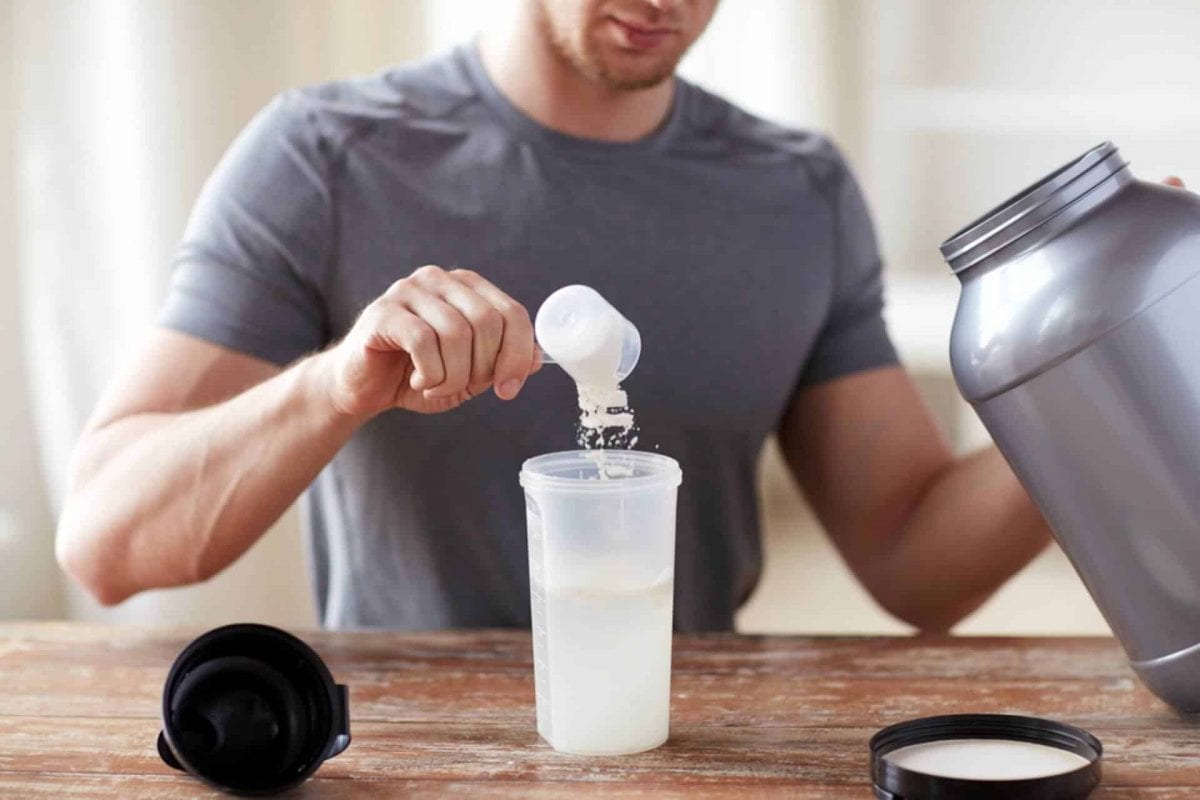There is a good chance that you have heard about different types of creatine. They have become the most potent muscle building supplements on the market. Not only has there been scientific proof of muscle gain with this supplement, but it has also been proven to enhance performance, and strength. Over the years it has even been suggested that creatine many have many therapeutic benefits. When you look at all these benefits, it really is no wonder that creatine is the number one sold supplement in the world.
With all that being said, if you are new to the supplement world, you need to know that there are several different types of creatine available and each can provide different benefits and results. Below you will learn about the different types and the benefits that you can receive from them.
What Is Creatine?
First and foremost, you should familiarize yourself with creatine in general. It is a nitrogenous compound that is naturally found in meats and fish. Once consumed, the compound will be synthesized by the pancreas, kidney and liver. Creatine is actually made of three amino acids, methionine, glycine, and arginine. Creatine monohydrate, which is enormously common today, was first used as a supplement by EAS in 1993. The entire purpose of consuming creatine is to speed up the growth of muscles. Creatine contains certain components that can help speed up the production of muscle cell energy.
What Makes Different Types Of Creatine Different
While many athletes, bodybuilders and other individuals know that different types of creatine is different, the do not understand the determining factors. Each type of creatine is unique in solubility, effectiveness and composition. One of the main things to consider when buying creatine is its solubility, which plays a huge role in its effectiveness. For instance, soluble creatine is capable of dissolving in different types of liquids, especially in water. Insoluble creatines will not dissolve, making it less effective than its counterpart.
Micronized Creatine
Many people refer to micronized creatine as “essentially creatine monohydrate.” The main difference in to the two is micronized creatine has been micronized, cut up or divided. When the creatine is micronized it expands their area by up to 20 times, which in turn increases the absorption and reduces stomach discomfort. So, if you have a low tolerance to creatine, you may find this type more suitable to your liking.
Just like any other weight loss or muscle enhancement product, micronized creatine has its advantages and disadvantages. One of the advantages of micronized creatine is its similarity to monohydrate. However, its molecules are smaller and surface area is larger. Which means that you will receive the same outstanding effects as you would if you were taking monohydrate.
Another very important advantage of micronized creatine is it does not cause undesirable side effects like monohydrate. Stomach discomfort and bloating are the two most common complaints of monohydrates, which can be unbearable for someone prone to gastritis or other stomach ailments.
Many experts swear that micronized creatine is more effective than monohydrate. In fact, most people that do not respond to monohydrate should very well respond to micronized creatine. Since micronized creatine goes through so many different processes, it is purer than monohydrate.
As far as disadvantages go, micronized creatine is more expensive than monohydrate. It also requires a loading phase, so keep this in mind when you are trying to choose a new creatine product.
Creatine Ethyl Ester (CEE)
Creatine ethyl ester has been stated as being one of the most potent versions of creatine available on the market. This has plummeted its popularity into new highs, and the reason that it is believed to be so potent is, because of the extra-added ester molecule in the formula. Simply put, esters are organic compounds that help delivery the creatine directly to your muscle cells, so the effects and benefits of almost instant. A lot of other formulas of creatine have to pass through the gut before entering the muscle cells, which destroys a lot of the creatine. Without having to pass through the gut users can see faster and increased results.
Monohydrate
There is truly a wide variety of different Creatine types. Nevertheless, most consumers will stick with monohydrate. This is the case, because this specific type of creatine tends to be less costly and more readily available. Monohydrate is created when the creatine molecule becomes mixed with water. In general, these specific varieties will typically contain a mixture of 10-percent water to 90-percent creatine or something close. Unfortunately, many research studies have concluded that Monohydrate Creatine is not necessarily effective at the molecular level. Simultaneously, it is unable to penetrate into the user’s muscle cell.
And of course, a lot of people that use Creatine Monohydrate will suffer from creatine bloating. Despite the negatives, Monohydrate creatine can still be an effective way to speed up the body’s muscle production.
Creatine Citrate
Creatine Citrate has become very popular, because of its water solubility. When the powder is added to water, it will dissolve very rapidly. While this specific variety is very popular, it has a few minor cons. For instance, these types tend to have far less creatine than the monohydrate alternatives. Simultaneously, you should expect to pay significantly more when making the upgrade to Creatine Citrate. Nevertheless, a lot of bodybuilders prefer Creatine Citrate, because it mixed far better and doesn’t clump up.
Buffered Creatine
At this point in time, buffered creatine is the hottest craze. It may not last, but its popularity has exploded like an atomic bomb. Buffered creatine has become a favorite, because it is capable of converting to creatinine very rapidly. This is the actually waste byproduct of creatine. It is widely believed that buffered creatine helps to reduce the potential for any gastric discomfort. And of course, the user doesn’t need to consume as much. Less creatine is needed per each serving to acquire the results that are desired.
With buffered creatine, the benefits include no bloating, no need for a loading phase, and more creatine intake for the muscle cells. Nevertheless, buffered creatine is new and therefore, somewhat costly.
Tri-Creatine Malate
This specific compound is produced with malic acid and creatine monohydrate. During the production process, a single molecule of malic acid is combined with three creation molecules. The malic acid helps to provide the body with energy. When mixed, this specific compound will become far more water soluble than regular monohydrate varieties. Simultaneously, the potential for gastric discomfort is greatly reduced. When compared to traditional monohydrate, Tri-Creatine Malate is widely considered to be superior.
Bruce Kuster graduated with a Bachelor of Science degree in Medical Biology and Health Science, he is also a coach and CrossFit lover, Bruce likes to share his passion for sport and nutrition on wealthformyhealth.com.








